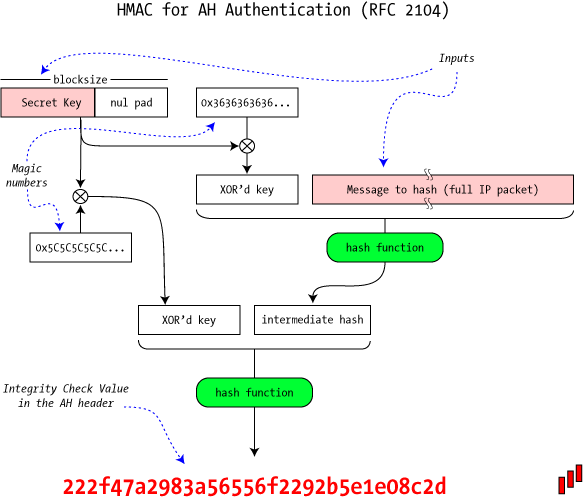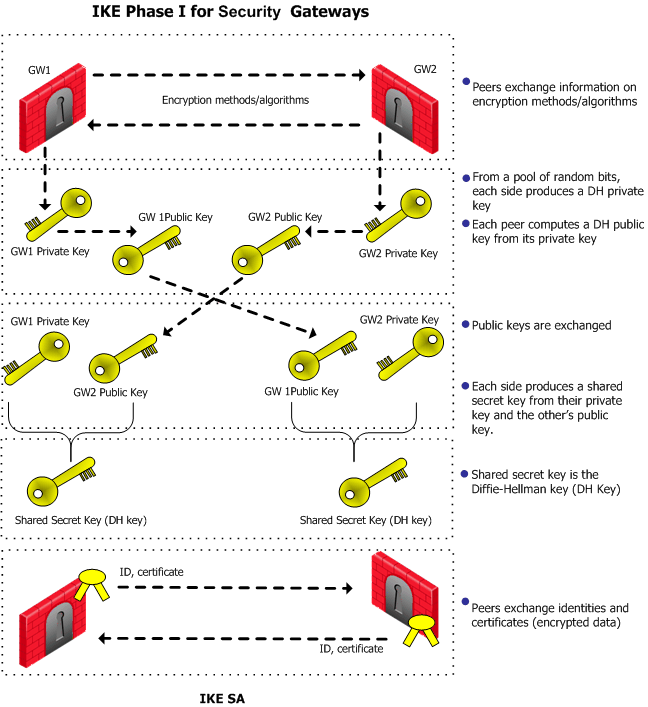Featured
Table of Contents
- – What Is Ipsec? - How Ipsec Vpns Work
- – About Ipsec Vpn Negotiations
- – What Is Ipsec Vpn - Ssl Vs Ipsec Protocol In 2023
- – Define Ipsec Crypto Profiles
- – Ipsec - Wikipedia
- – 1. Define Ipsec? 2. What Ipsec Used For? 3. ...
- – What Is Ipsec And How It Works
- – What Is An Ipsec Vpn?
- – Ipsec Vpn In Details - Cyberbruharmy - Medium
- – Understanding Ipsec Vpns
What Is Ipsec? - How Ipsec Vpns Work
IPsec (Internet Procedure Security) is a structure that helps us to protect IP traffic on the network layer. Why? since the IP procedure itself doesn't have any security includes at all. IPsec can safeguard our traffic with the following functions:: by encrypting our information, no one other than the sender and receiver will be able to read our data.

By calculating a hash worth, the sender and receiver will have the ability to examine if changes have been made to the packet.: the sender and receiver will confirm each other to make certain that we are actually talking with the device we intend to.: even if a packet is encrypted and confirmed, an attacker could attempt to catch these packets and send them again.
About Ipsec Vpn Negotiations
As a framework, IPsec uses a variety of procedures to implement the features I described above. Here's an overview: Don't fret about all packages you see in the image above, we will cover each of those. To give you an example, for file encryption we can select if we wish to utilize DES, 3DES or AES.
In this lesson I will begin with a summary and then we will take a more detailed take a look at each of the components. Prior to we can safeguard any IP packages, we need 2 IPsec peers that develop the IPsec tunnel. To establish an IPsec tunnel, we utilize a protocol called.
What Is Ipsec Vpn - Ssl Vs Ipsec Protocol In 2023
In this phase, an session is developed. This is also called the or tunnel. The collection of specifications that the 2 gadgets will utilize is called a. Here's an example of 2 routers that have established the IKE phase 1 tunnel: The IKE stage 1 tunnel is just utilized for.
Here's a photo of our 2 routers that completed IKE phase 2: Once IKE phase 2 is finished, we have an IKE stage 2 tunnel (or IPsec tunnel) that we can use to protect our user information. This user information will be sent out through the IKE phase 2 tunnel: IKE constructs the tunnels for us but it does not verify or secure user information.
Define Ipsec Crypto Profiles


I will describe these two modes in information later in this lesson. The entire procedure of IPsec includes five steps:: something needs to activate the development of our tunnels. When you set up IPsec on a router, you utilize an access-list to tell the router what data to protect.
Whatever I discuss below uses to IKEv1. The primary purpose of IKE stage 1 is to develop a secure tunnel that we can utilize for IKE phase 2. We can break down stage 1 in 3 basic actions: The peer that has traffic that should be safeguarded will start the IKE stage 1 settlement.
Ipsec - Wikipedia
: each peer has to show who he is. 2 frequently utilized alternatives are a pre-shared secret or digital certificates.: the DH group figures out the strength of the secret that is utilized in the key exchange procedure. The greater group numbers are more protected however take longer to calculate.
The last action is that the two peers will confirm each other using the authentication method that they concurred upon on in the negotiation. When the authentication is effective, we have completed IKE phase 1. Completion outcome is a IKE stage 1 tunnel (aka ISAKMP tunnel) which is bidirectional.
1. Define Ipsec? 2. What Ipsec Used For? 3. What Are The ...
Above you can see that the initiator utilizes IP address 192. IKE uses for this. In the output above you can see an initiator, this is a distinct value that recognizes this security association.
The domain of interpretation is IPsec and this is the very first proposal. In the you can discover the characteristics that we desire to use for this security association.
What Is Ipsec And How It Works
Given that our peers settle on the security association to use, the initiator will begin the Diffie Hellman crucial exchange. In the output above you can see the payload for the key exchange and the nonce. The responder will likewise send out his/her Diffie Hellman nonces to the initiator, our two peers can now compute the Diffie Hellman shared secret.
These two are used for recognition and authentication of each peer. The initiator begins. And above we have the sixth message from the responder with its identification and authentication info. IKEv1 primary mode has now finished and we can continue with IKE stage 2. Prior to we continue with phase 2, let me show you aggressive mode.
What Is An Ipsec Vpn?
1) to the responder (192. 168.12. 2). You can see the transform payload with the security association qualities, DH nonces and the recognition (in clear text) in this single message. The responder now has whatever in needs to generate the DH shared essential and sends out some nonces to the initiator so that it can likewise determine the DH shared key.
Both peers have whatever they require, the last message from the initiator is a hash that is used for authentication. Our IKE stage 1 tunnel is now up and running and we are all set to continue with IKE phase 2. The IKE stage 2 tunnel (IPsec tunnel) will be actually utilized to safeguard user data.
Ipsec Vpn In Details - Cyberbruharmy - Medium
It safeguards the IP packet by determining a hash value over practically all fields in the IP header. The fields it leaves out are the ones that can be altered in transit (TTL and header checksum). Let's begin with transport mode Transport mode is basic, it simply includes an AH header after the IP header.
: this is the calculated hash for the whole package. The receiver likewise calculates a hash, when it's not the same you understand something is incorrect. Let's continue with tunnel mode. With tunnel mode we include a brand-new IP header on top of the initial IP package. This could be beneficial when you are utilizing personal IP addresses and you need to tunnel your traffic online.
Understanding Ipsec Vpns
Our transport layer (TCP for instance) and payload will be secured. It likewise provides authentication however unlike AH, it's not for the whole IP package. Here's what it looks like in wireshark: Above you can see the original IP packet which we are utilizing ESP. The IP header remains in cleartext but whatever else is encrypted.
The initial IP header is now likewise encrypted. Here's what it looks like in wireshark: The output of the capture is above resembles what you have actually seen in transport mode. The only difference is that this is a new IP header, you don't get to see the original IP header.
Table of Contents
- – What Is Ipsec? - How Ipsec Vpns Work
- – About Ipsec Vpn Negotiations
- – What Is Ipsec Vpn - Ssl Vs Ipsec Protocol In 2023
- – Define Ipsec Crypto Profiles
- – Ipsec - Wikipedia
- – 1. Define Ipsec? 2. What Ipsec Used For? 3. ...
- – What Is Ipsec And How It Works
- – What Is An Ipsec Vpn?
- – Ipsec Vpn In Details - Cyberbruharmy - Medium
- – Understanding Ipsec Vpns
Latest Posts
7 Best Vpns For Business In 2023 And Some To Avoid
Best Phone Vpn In 2023
Vpn Not Working On Windows - Common Errors & Fixes
More
Latest Posts
7 Best Vpns For Business In 2023 And Some To Avoid
Best Phone Vpn In 2023
Vpn Not Working On Windows - Common Errors & Fixes